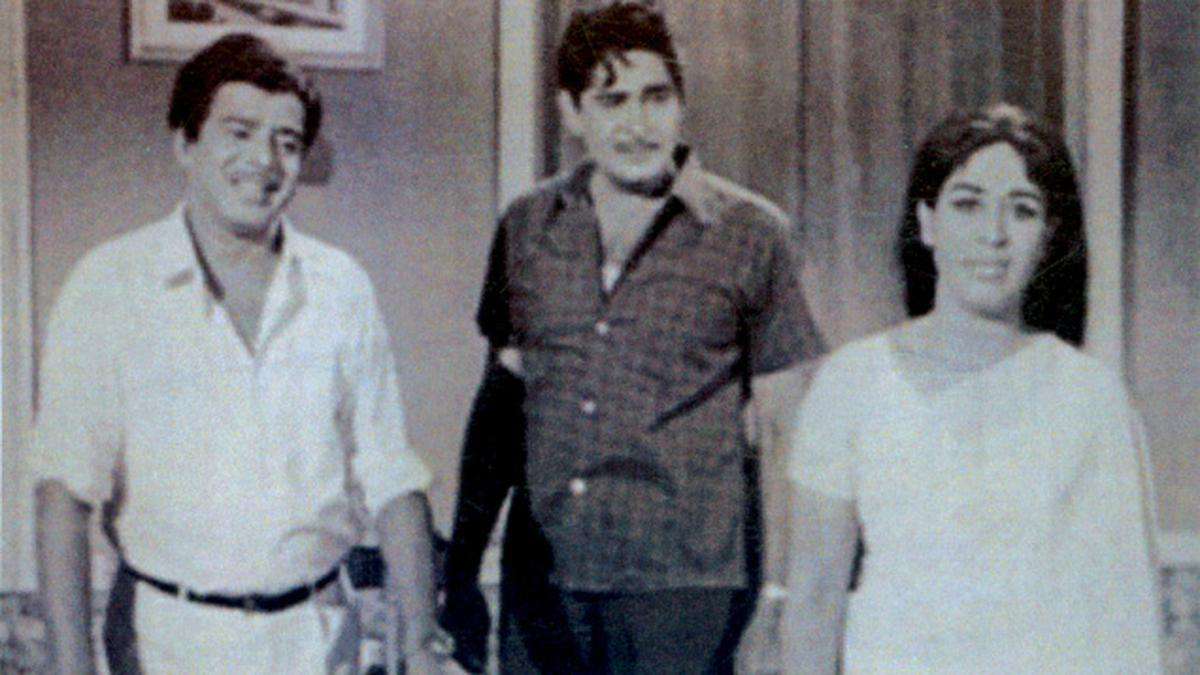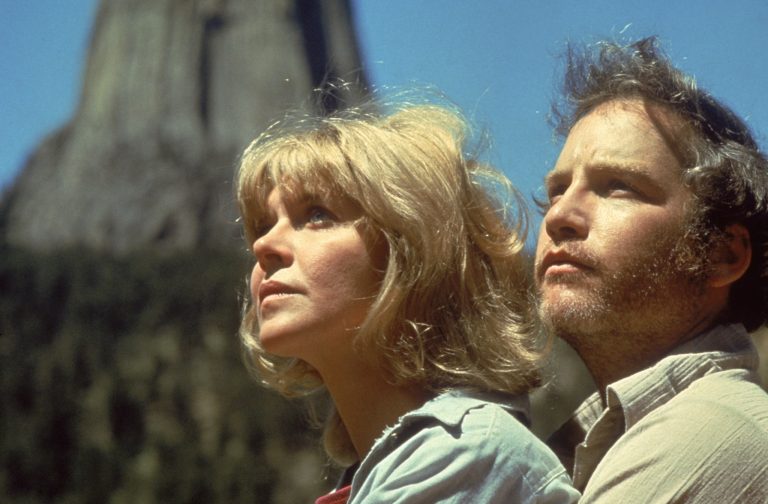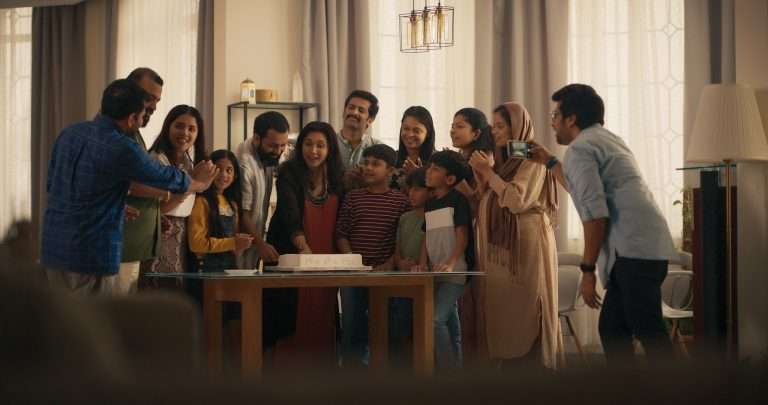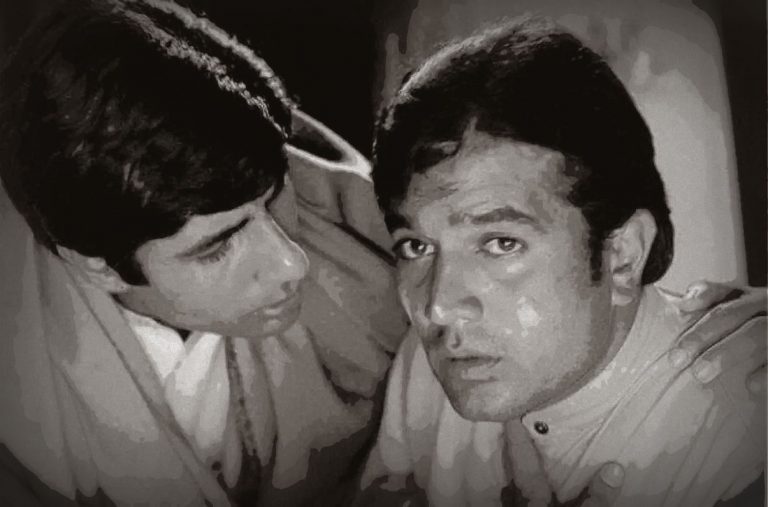Unmasking Leprosy in the Malayalam Films Ashwamedham and Sarasayya
| Ashwamedham -1967 | Sarasayya – 1971 |
| Directed by – A.Vincent | Directed by – Thoppil Bhasi |
| Language – Malayalam | Language – Malayalam |
| Cast – Sathyan, Sheela, Prem Nazir, Madhu, P.J. Antony and Santha Devi | Cast – Madhu, Sheela, Sathyan, Jayabharathi, Adoor Bhasi, and K.P.A.C. Lalitha |
Films play a pivotal role in the everyday existence of an ordinary individual. Its multi-faceted nature not only entertains but also possesses the remarkable ability to enlighten and shape the intricacies of human thought. As a cultural artifact, cinema carves out its distinct place by portraying truths that transcend time and resonate universally. It stands as a lush heritage of humanity, with celluloid serving as the archive of the collective heartbeat of the entire human race. Whether propelled by a change in surroundings or the narrative threads of literature, cinema consistently urges individuals to delve into profound contemplation about the tangible realities of life.
As a widely embraced medium, film started to explore the depths of Indian society’s psyche, which is evident in the increasing production of movies and the growing value and allure of those engaged in filmmaking. They are no longer limited to the periphery of entertainment; they are now potent instruments to educate the masses as well. It has started to unwrap the real sagas of flesh and blood. Certain films resonate with the tragic predicament of millions of patients who yearn for identity and love, even in modest transformations. The movies Ashwamedham and Sarasayya will throw light on the commonalities and disparities in depicting the stigma and superstitions of leprosy prevailing in society.
Sarsayya (1971) is considered to be the sequel of Ashwamedham, which was released in 1967. Both films are adaptations of plays penned by the renowned Indian playwright and screenwriter Thoppil Bhasi. Ashwamedham, directed by A. Vincent, and Sarasayya, by Thoppil Bhasi, have emerged triumphant in depicting the harrowing sagas of leprosy and the ostracization encountered by the sufferers in society. Thoppil Bhasi, a prominent figure in the realm of Malayalam literature and theatre, played a key role in shaping the cultural landscape of Kerala. His literary legacy extends beyond the stage, encompassing a notable body of published plays that continue to resonate with readers. His works, often characterized by a potent fusion of social commentary and artistic flair, are a testament to his mastery as a playwright.
Moreover, his auteurial acumen perfected his role as a playwright, where he crafted narratives that probed into societal injustices, human resilience, and the transformative power of communist ideology. The select movies can be looked at not as an individual story but as a piece of story expounding the extremely sorry state of multitudes of curable leprosy patients and the incurable mindset of ordinary people towards Hansen’s disease. Films like Ashwamedham and Sarasayya have played a crucial role in developing the discourse around leprosy. These movies not only address the medical aspects of the disease but also delve into the emotional and social repercussions on individuals, their communities, family, and friend circles. Both films won accolades, acclaim, and applause for realistic renditions of the phases cum faces in an (in)/curable leprosy patient’s life.
Leprosy, a disease entwined with historical stigmas and misconceptions, has found its representation on the Indian cinematic canvas. This article unveils the representation of leprosy in Indian films, shedding light on how the medium reflects and shapes societal perceptions of the disease. Leprosy, historically hampered by stigma and fear, has been a predominant theme in Indian films across decades. These portrayals often reinforced negative stereotypes, depicting leprosy-afflicted individuals as outcasts. In addition to this, filmmakers have taken a nuanced approach, targeting to challenge the stereotypes and humanize the experiences of those affected by Hansen’s disease.
The trajectory of leprosy narratives in Indian cinema, especially on the Malayalam silver screen, is remarkable. Films like Ashwamedham and Sarasayya have made a mark of their own by bringing to the limelight the ordeals of people who are deemed as eternal patients, not by their choice. These movies not only address the medical aspects of the disease but also delve into the emotional and social repercussions on the personal spheres of the individuals.
Ashwamedham (Horse Sacrifice) is regarded as the first movie in the Malayalam language to depict the devastation of leprosy victims. The film revolves around Sarojam and her family. Sarojam, the daughter of Keshava Swamy, falls for an affluent guy, Mohan. Both families agree on the marriage somehow, and Sarojam soars high in her imaginative sky of the wedding dreams. The seven glorious days of pre-wedding dreams are shattered all of a sudden with the shocking news that reveals Sarojam has leprosy.
Their marriage is called off, and Sarojam is admitted to the Sanatorium. She tries hard to realize the harsh realities of a disease like leprosy and the indifference people start showing to her. Doctor Thomas, who treats leprosy patients at the Sanatorium, has decided to treat her. It takes almost six months for Sarojam to recover completely from the disease. Time, the subtle chief of youth, has brought radical transformations, and people dear and near start drifting apart.
Sarojam goes back to her home after being discharged from the hospital. To her utter dismay, nobody in the family is willing to accept her. Her parents and siblings cannot believe that her disease has been cured. When she reaches home, Sarojam gets to know that her younger sister, Sarala, is going to get married. Sarojam is broken as nobody has informed her about the marriage. Her brother Sadanandan tells Sarojam, “I have not informed the guy’s family that the girl’s sister is a leprosy patient.” A depressed and distraught Sarojam leaves home within no time.
She even feels that she does not have a refuge even in the Sanatorium because she is no longer a patient. She remains an eternal patient for her own family and society. Sarojam meets Mohan, the love of her life. Mohan could not believe that she is cured, and he even asks Doctor Thomas whether Sarojam had fully recovered. The doctor’s positive response does not make any change in Mohan, and he has decided to reject her from his life forever. She joins the Sanatorium towards the close of the film and makes up her mind to devote her life to serving the patients.
Sarasayya (Bed of Arrows) is a cinematic adaptation of Thoppil Bhasi’s 1964 stage play, conceived as a sequel to Aswamedham. The film achieved acclaim, securing the prestigious Kerala State Award for Best Feature Film and earning Sheela the Best Actress Award that year. Produced under the banner of Deepak Combines by P.V. Sathyam, the film was skillfully directed by Thoppil Bhasi, who also undertook the responsibilities of scriptwriting and dialogues. The storyline revolves around Doctor Thomas and his endeavor to treat and cure Sarojam of leprosy, addressing the persisting societal stigma associated with the disease. Despite Thomas’s altruistic efforts, he faces unjust accusations and professional repercussions, leading to his suspension from service and the introduction of Doctor Harindranath as his replacement.
The opening scene of the movie introduces Doctor Thomas and Sarojam. Doctor Thomas offers Sarojam refuge as she is expelled from her family. Her lover Mohan also could not accept her owing to the perception of leprosy as an incurable disease. Thomas keeps on researching and finding new and effective medicines to combat the disease. Thomas, who has been treating and curing leprosy patients, gives her shelter. His wife, Girlie, is unpleasant with this decision and starts spreading rumors about Sarojam. Her former lover, Mohan, also joins Girlie in spreading scandals about the relationship between Thomas and Sarojam.
Thomas ends up suspended from service as Paulose, Girlie’s father, lodges a complaint against Thomas, questioning the allegedly promiscuous and illegitimate relationship between the doctor and patient. Sarojam returns home, but people and their attitudes have changed a lot. Doctor Harindranath joins as a new doctor. He takes time to sense the sanctity of the relationship between Thomas and Sarojam. His empathy is transformed into love, and he proposes Sarojam. Harindranath has decided to go home to get consent from his parents to solemnize his marriage with Sarojam.

They have decided to keep their love affair a secret until Harindranth’s family gives the green signal. Sarojam’s sister, Sarala, and her husband keep ill-treating Sarojam, claiming she is a fallen woman. Mohan approaches Sarala with the hidden aim of winning her love. He mercilessly beats their mentally challenged father and Sarojam protests against this inhuman act. Sarojam and her father are forced to leave their home. They are offered shelter once again by the kind Doctor Thomas.
The love affair of Harindranath and Sarojam is not known to Doctor Thomas. In a fragile instant, he approaches and requests Sarojam to satiate his erotic desires. Sarojam, who treats him as a Godly figure, agrees to the doctor’s wish quite reluctantly. Harindranath returns to the scene with the happy news that his parents have accepted his desire to marry her. Sarojam confesses the catastrophic incident to Harindranath, albeit she does not reveal the identity of the man who marred her chastity. Keshava Swamy, the father of Sarojam, who is a silent sufferer and mute spectator to the dreadful incident, questions Thomas about his unpardonable act. Thomas is distressed and has lost his peace of mind.
He involuntarily injects the wrong medicine into Keshava Swamy, causing his death. Thomas’ research thesis on the new methods of leprosy treatment gains the endorsement of the Medical Board. Girlie realizes her mistake and atones on her harsh behavior towards her husband. She, along with Harindranath, hurries to inform Thomas of the Medical Board’s decision. But they find that Thomas has killed himself, fearing arrest for triggering the death of Keshava Swamy. The movie ends with a note of pessimism, portraying the real bed of arrows in the life saga of a leprosy patient. In its portrayal of intricate human dynamics, Sarasayya delves into the challenges faced by its characters, knitting a narrative that traverses love, betrayal, and the consequences of societal unfairness.
The very name of the movie Ashwamedham connotes horse sacrifice. The horse sacrifice is not related to the sacrifice mentioned by Rishis in epics, but it talks about the epoch-changing yaga or sacrifice of the modern man. All patients in the movie are thirsty for their liberty. They are craving for a role, an identity, a space, and a room of their own in society. They earnestly believe life has become unfair and have lost their share of happiness in this modern world, and they will never lead the life they had once yearned for. A woman’s life is sacrificed at the altar of the misconceptions prevailing in the society. Sarojam represents multitudes of leprosy patients who crave an iota of love, at least from their own families.
Sarasayya alludes to the bed of arrows. Sarojam’s life path is a hostile one, and the indifference of society acts as arrows capable of piercing her emotionally, ethically, mentally, and physically. Those who once praised her beauty and appearance cannot accept her as a human being. She is a patient in the eyes of all in, around, and within this mighty universe. Leprosy and treatment have earned her a novel identity that can only question and throw arrows at her. Ashwamedham and Sarasayya have boldly attempted to break the stigmas associated with leprosy.
The play Ashwamedham was made into a film by Supriya Pictures. The leprosy sanatorium at Nooranad was the primary location. It is even mentioned in the introduction to the play that Thoppil Bhasi was a frequent visitor to Nooranad Sanatorium, and the heartbreaking tales of leprosy victims moved his emotions and imagination. This was the first Malayalam film that focused on how society spreads fabricated information about a disease like leprosy.
Thoppil Bhasi has written the script and dialogues for his play Sarasayya. He directed the second part by giving life to the characters who were made immortal by Sathyan and Sheela, especially in the first part, Ashwamedham. Sarasayya remains unique in multiple ways as the playwright has rendered life to the pages of his creative smithy through the stages of the celluloid medium. Sathyan, who excelled above par in his role as Doctor Thomas in both films, left the mortal world a few days before the release of Sarasayya. In a way, the film remains a tribute to this versatile prodigy with wide-ranging acting skills.
The artistic rendition of songs remains empathetic to the events and happenings of the characters in Ashwamedham as well as Sarasayya. The songs penned by Vayalar Ramavarma and tuned by G. Devarajan in the films have etched the emotional undercurrents of cinematic themes with the utmost sense of reality. The songs like ‘Ezhu Sundara Rathrikal,’ ‘Karutha Chakravalam,’ ‘Oridatthu Jananam Oridatthu Maranam,’ and ‘Njan Ninne Premikkumnu’ have succeeded in moving the psyche of the spectators along with the scenes, shots and the unprecedented nemesis of the characters. In both films, Sarojam yearns for a marital life of bliss with her beloved. The tumult of leprosy has tattered her life from the dreams of a wedding bell that began ringing already.
She has seen and felt this world as a black horizon bestowing her prison life. She has decided to move on, although she is deserted by her loved ones, including her beloved. Sarasayya has also unraveled Sarojam’s life, battling in the battle drowned in arrows. She feels the meaningful meaninglessness of her life coupled with the marriage proposal of a newcomer doctor. The frailties of life have reserved something for her, and she ends up with thorns and arrows from all corners. Leprosy patients are thrown stones by the so-called ordinary people. This abnormality of throwing stones and treating them brutally is almost coterminous with the way one (in)curable patient is destined to have only a bed of arrows in society.
The name Sarojam, attributed to the heroine in the films, has great significance. Sarojam (meaning Lotus in Malayalam) is one of nature’s most mysterious flowers. This flower of rebirth and Sarojam are symbolic of a transformation from this traumatic experience of leprosy and its aftereffects. The timeless message of Sarojam’s tragedy is heard on alien shores despite all geographic differences and distances. Even after decades of its release, both films retain an unequivocal relevance to date. They have endeavored to promote and stress the importance of public health.
Thoppil Bhasi’s grandeur endures as a multifaceted creative force, contributing pre-eminently to the genres of both theatre and cinema. Sarojam’s stentorian question still echoes in a society of scientific and technological advancements. She asks Doctor Thomas, “Is disease a crime, doctor? This is a potent query to a society that is immersed in sheer superstitions surrounding certain diseases.
Ashwamedham and Sarasayya have carved a niche of their own by proving leprosy is a curable disease. Medicines are available to treat and cure patients, but nobody can cure the superstitious beliefs and taboos existing in society. Despite all the competency of scientific, technological, and artificial intelligence, medicines have not been invented so far to treat and cure the mindsets of a humans immersed in misconceptions. The films have brought a serious human issue to the audience’s attention. The director exposes the heart of a leprosy patient to the world. The superstitions depict the horror of extreme cruelty to the patient/victim.
The despondency of leprosy victims is the principal motif in both films. It is true that nobody likes and accepts the deformities that leprosy causes in humans. But one must understand the emotions that go with it—the emotions that operate within the individual and in society. These characters walk from everyday life to the movie screen. Thopil Bhasi has given them not only the outward appearance but also the body – postures and movements inextricably intertwined with reality. When persons with leprosy become aware of the disease, it will be hard for them to admit the change it makes in themselves and the environment.
Everything turns topsy-turvy all of a sudden, and they are dejected from all walks of life in all ways. Indisputably, the attempt to present a prejudiced societal issue and a compelling message to a broader audience via the celluloid medium has emerged successful. Both films’ scenes are brilliant, with dramatic moments and conflicts—spontaneity and drama-perfect conversation. Science is growing. But it is only in the brain of science. It should also reach people’s brains. The scientific consciousness of the scientist should be cultured. There is also a need for a reconstruction in the brains of humans.
The influence of the films Ashwamedham and Sarasayya extends beyond the screen, impacting societal attitudes towards leprosy. By humanizing characters and showcasing their struggles and triumphs, cinema can contribute to dismantling age-old prejudices associated with the disease. The cinematic medium serves as a powerful tool for advocacy, fostering empathy and understanding among the audience. Thoppil Bhasi’s grandeur endures as a multifaceted creative force, contributing significantly to the genres of theatre and cinema in the Malayalam language. As a result, no era or custom can dull the infinite variety made immortal by the celluloid medium for a message accentuating a clarion call about society’s (un)curable mindset.
REFERENCES:
- Bhasi, Thoppil. Ashwamedham, Prabhath Book House, 1989. —. Sarasayya. Prabhath Book House, 1983.
Ashwamedham. Directed by A. Vincent, performances by Sathyan and Sheela, Hari Pothan, and Supriya Pictures, 1967. - Sarasayya. Directed by Thoppil Bhasi, performances by Sathyan, Madhu, and Sheela, P.V. Sathyam and Azeem Company, 1971.







